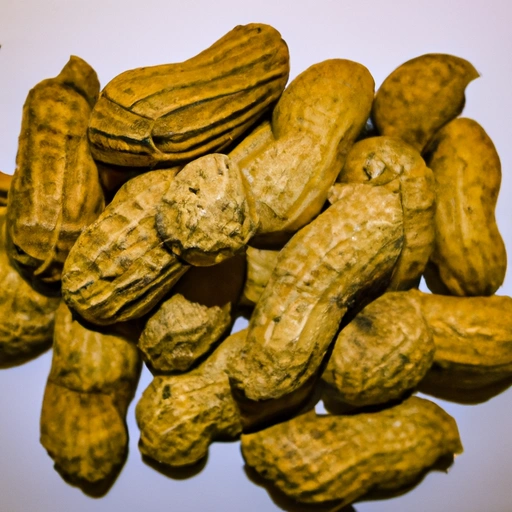Peanut
Description

The peanut, also known as the groundnut, goober, or monkey nut, and taxonomically classified as Arachis hypogaea, is a legume crop grown mainly for its edible seeds. It is a notable ingredient in many cuisines around the world and is used in a variety of forms, such as whole peanuts, peanut oil, peanut flour, and peanut butter. Peanuts are rich in essential nutrients and are a convenient source of protein, making them a popular snack and culinary ingredient.
Common uses
Peanuts are commonly eaten raw, roasted, or boiled and are frequently found in trail mixes, granola, and as toppings for a variety of dishes. Peanut butter is a widely loved spread for sandwiches, baking, and as a base in savory sauces.
Nutritional value
Calories
A one-ounce (28 grams) serving of peanuts contains approximately 161 calories (675 kJ).
Protein
Peanuts are an excellent source of protein, with about 7 grams per one-ounce (28 grams) serving.
Fat
Peanuts are high in healthy fats, predominantly monounsaturated and polyunsaturated fats, with around 14 grams of total fat in a one-ounce (28 grams) serving.
Carbohydrates
Carbohydrates in peanuts amount to roughly 4.6 grams per one-ounce (28 grams) serving.
Vitamins
Peanuts contain vitamins like B1, B3, B6, E, and folate. They provide a good source of niacin and are particularly rich in vitamin E.
Minerals
This legume is loaded with minerals, including magnesium, phosphorus, potassium, zinc, iron, and manganese.
Health benefits
Peanuts may support heart health, aid in weight management, and are believed to help with blood sugar control. Their high content of protein and fiber can contribute to a feeling of fullness, which may help reduce overall calorie intake.
Potential risks
One of the most significant risks associated with peanuts is the potential for allergic reactions, which can be severe. Additionally, peanuts are susceptible to contamination by aflatoxins, which are toxic substances produced by certain molds. Furthermore, due to their high caloric density, excessive consumption of peanuts could lead to weight gain.
Common recipes
Peanuts are used in a variety of dishes such as peanut butter sandwiches, peanut sauces for savory dishes, peanut soups, and as a crunchy garnish on salads and desserts.
Cooking methods
Peanuts can be roasted, boiled, fried, or ground into a paste. They can also be baked into goods, or processed into peanut oil for cooking.
Pairing with other ingredients
Peanuts pair well with flavors such as chocolate, honey, fruits like bananas and apples, and spices like chili and cinnamon. They also complement savory dishes with chicken, beef, or vegetables.
Summary
Peanuts are a versatile and nutritious ingredient that can be enjoyed in a variety of ways. Whether eaten on their own, incorporated into recipes, or processed into peanut butter or oil, they offer a tasty and healthful addition to many diets around the world. However, it is important to be mindful of peanut allergies and potential risks when including peanuts in your meals.